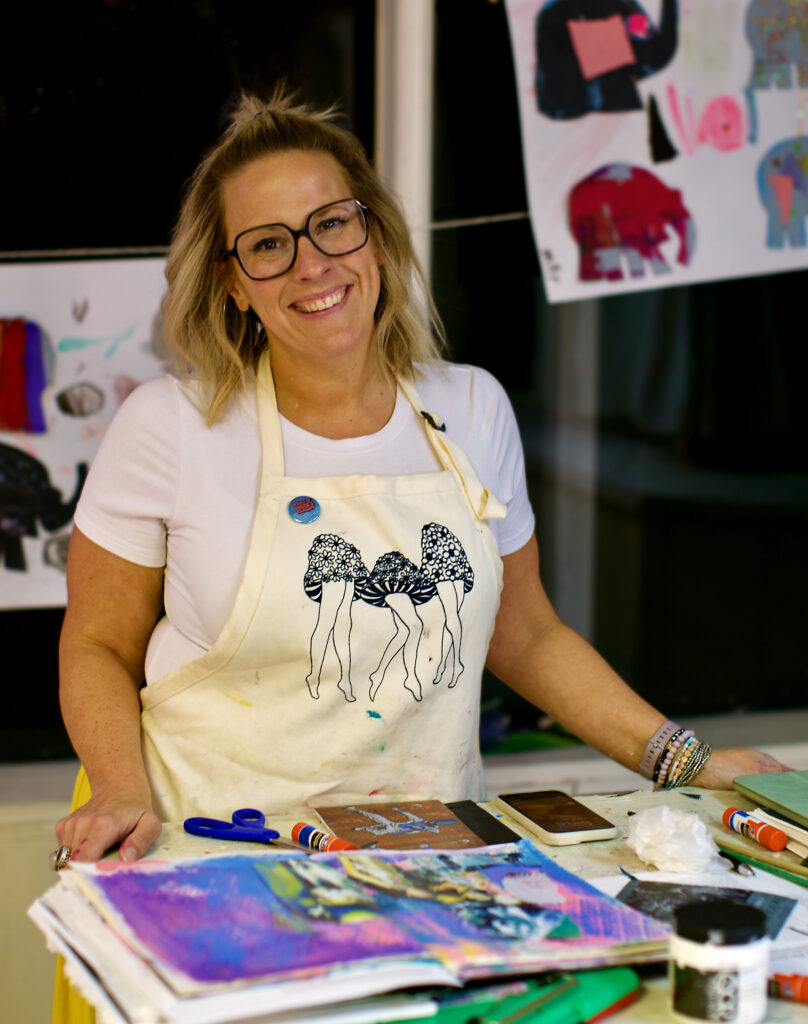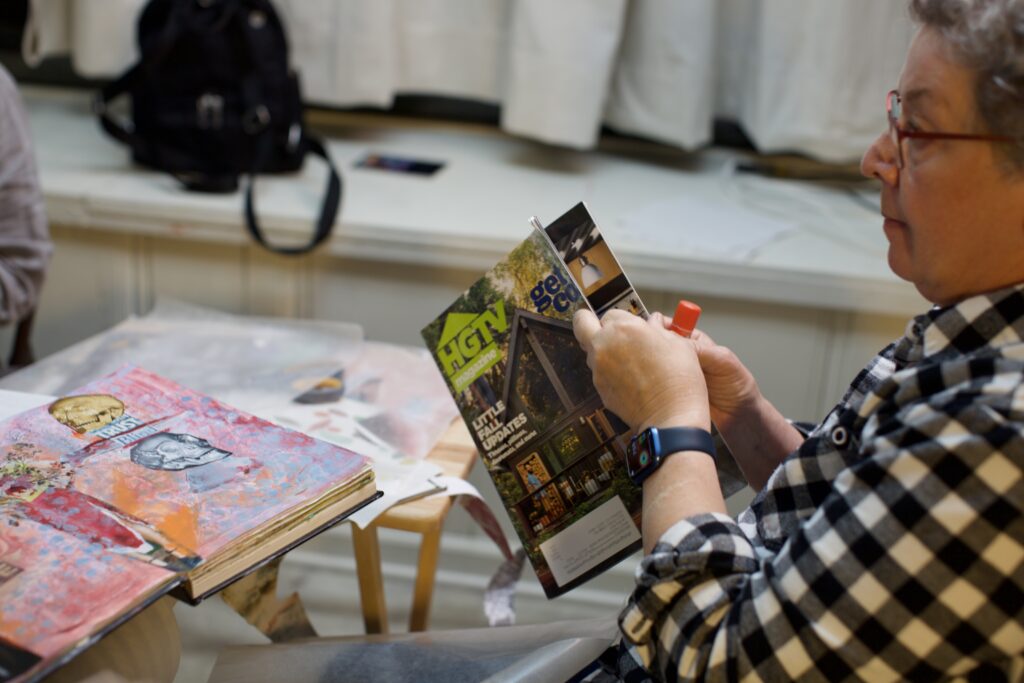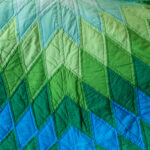Ann Flowers Gosser started making art as a child and decided in high school “there was no question” it’s what she wanted to continue to do in college. As an art major at Murray State University in Murray, Ky., she studied printmaking and then went to graduate school at Northern Illinois University to study printmaking. After graduate school, because she says she realized she had been living in an “art bubble” and many people outside of the art world she’d been a part of didn’t really care about art, it took her a “really long time” to find her way.
Printmaking is a communal art, Gosser says, because to access the supplies for it, one has to be in the shop with other people. She enjoyed being a part of this setting while in school because she says when someone discovered a “weird or cool” technique, others in the studio would be excited for them and want to try it, too. She missed this type of community when she moved back to Murray after graduate school.
While back in Murray, Gosser began getting back into the mixed media she’d utilized before college, because she didn’t have access to printmaking materials. Also, with her young daughter at home, she needed to make use of the materials and space she had right in her living room and home studio.
She says now, it’s the “first time in a really long time” she feels excited when she goes into the studio because she’s “happy” about the materials on her table. She says she loves the immediacy of mixed media; she teaches art journaling classes at the Murray Art Guild, and the classes provide her with an art community and the opportunity to try new techniques to apply to her studio work.
“[Art journaling is] where I can explore and make a mess and it not be good,” Gosser says.
Gosser began teaching children’s art classes at the art guild around 2017. Throughout the pandemic, she started wanting to work with adults who were interested in art, and she launched a class called Collage Night, where adults could have free time to make whatever art they wanted from the materials she provided. As the classes went on, she noticed attendees wanted more guidance, and she says the more she guided them, the more it felt like they were journaling through what they were making. She decided to bring in the writing component and began calling the classes Art Journaling. She teaches the class twice a month, and many of her students are regulars who come every month.
Gosser says she loves that art journaling is accessible for anyone who wants to be creative.
“I think that so many people don’t trust themselves that they can make art, especially if they don’t necessarily think of themselves as an artist,” Gosser says. “I think [art journaling] opens the door for them to be able to realize they have that creative power, too.”
At each class, Gosser provides the same supplies — scrapbook paper, stencils, paint sticks, paint pens, cutouts, magazines and glue sticks — for students to create with. She says although the materials are the same at each class and even if the prompt is the same, the art the attendees create is different because of what they bring to it through their life experiences on that particular day.
“I have truly discovered that we can pull out the same stuff every month and the prompt is going to make you look for completely different images, and just the whole tone is going to shift,” Gosser says. “It’s really genuine for you in that moment.”
Gosser says often, an art journaling piece will reach the “awkward teenage stage,” and attendees ask for her opinion about what it needs to tie it all together. She says a piece can “always move and change,” and adding more layers to it helps bring it all together so it can “grow up.”
Gosser says there is no right or wrong way to practice art journaling: It can be simple, like writing and doodling around written words, or it can take a more complex form, such as collaging in a journal to communicate thoughts and feelings. The point, she says, is to let go of expectations to have the freedom to create.
Here, Gosser shares the steps for art journaling that she follows during the classes she teaches.
Make your own art journal page
1. Get something on the page. This can be anything, including paint, scrapbook paper, or another material you feel drawn to. The goal is to cover most of the page with the medium as a base layer or background, so you’re not staring at a blank page.
2. With a paintbrush, put ground on the canvas, which acts as a primer to prepare the page for the other wet materials you will use on it. Ground can be bought at arts and crafts supply stores. Set the page aside to let it dry.
3. Spend approximately 10 minutes journaling to a prompt or about whatever is on your mind.
4. Cut or tear out images, words, textures and colors from magazines that speak to what you wrote about. Using a glue stick, glue them to the page after the ground has dried. Pro tip: Use a hair dryer to speed up the drying process.
5. Add other layers of material to the page. A few ideas include paint; stickers; artifacts from your life like receipts, candy wrappers or tickets; or any other medium that catches your attention. Also add texture to the page by using stencils and other materials to create patterns that tie the page together.






1 Comment